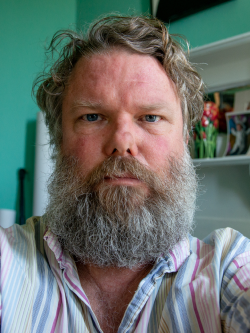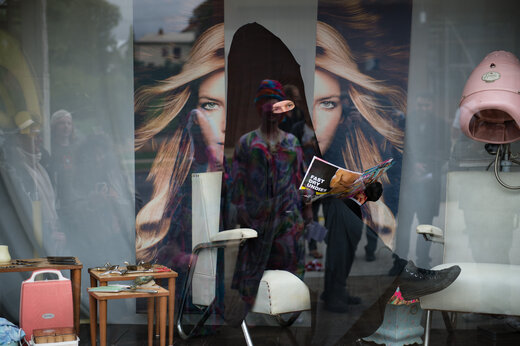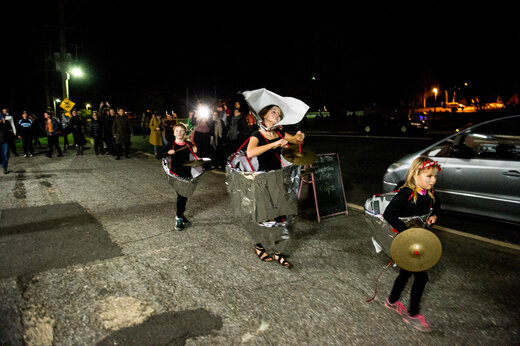
When place branding goes wrong, what do you do?

Artist Alex Wisser is the creative producer of Cementa, a community-driven regional arts organisation based in the post-industrial town of Kandos in the NSW central tablelands.
He shared his unique experience of how to turn a negative into a positive at the Place Branding Australia 2024 conference last week.
After a rocky start to his inaugural contemporary art festival in Kandos 11 years ago Wisser said he was left wondering whether the locals wanted to kneecap him. But today Cemeta is currently putting together its sixth festival, and he’s even become a local.
“We never left the town, and so we’ve been living there for 12 years. It’s my home now,” he said.
Art festival-led economy
Cementa started after Wisser and his partner, also an artist, came to Kandos for an artists residency in 2012.
The town sprung up following the discovery of limestone in 1913, and a cement works was established which would play a central role in the development of Sydney’s infrastructure.
But the cement works had closed a year before Wisser arrived, taking with it the town’s defining industry, its economy and its identity.
“We were sitting there with the people who ran the residency, and we started to talk about what it would mean for the town,” Wisser said. “The suggestion came up that maybe we could put on an art festival and we started to put it all together.
“We decided for that first festival, we’d ask the artists to come up and make work about the place and instead of making work about the things that city people think about, to make it about Kandos. And that kind of set the DNA of the festival. It unfolded from that.”

Combating resistance and scepticism
The burning question was how to win the town’s support for a festival of contemporary art, something that was completely alien to its working class base.
“There was a lot of scepticism in the town, there was a lot of resistance as well,” Wisser said.
What he didn’t want it to be was a case of artists flying in and flying out, using the town as a venue and then packing up and going home.
If the festival was going to fly, it would have to get to the heart of the town’s identity.
“We really had to think about how we could make art that would not simply reproduce the cultural bubble that we came from, but that could address people who were very different and that had a very different culture.
“So we asked the artists to make art that talks about the place and its cultural, social and environmental context. Our idea was while the locals may not know or understand the language of contemporary art, we would give them something that didn’t make them feel excluded.”
Another selling pinpoint was the economic benefits a festival would bring.
“The question was, if they’re not going to welcome us with open arms for contemporary art alone, what can we offer?
“And the idea pretty quickly came up that, well, at least we’ll be bringing some economic activity. So I think those two things kind of combined.“
Disasters averted
The festival nearly came undone in its first year when one of the artists staged a squatter-themed performance piece which involved unwittingly trespassing on an unoccupied property.
“It made a lot of people very angry and it was a real crisis for us as a team,” Wisser said.
“I remember walking around the IGA and looking at the locals, and wondering whether they were the ones who wanted to kneecap me.”
The Cememta team tackled the situation head-on by opening lines of communication with community leaders.
“We sat down with them and they read us the riot for an hour and a half, and we apologised profusely,” he says.
“They made us print the apology in the newspaper. They made us donate money to a local charity, and we went on with the festival. “
The team also had to deal with anger from local shop owners who were concerned about the impact of the festival on their businesses.
“One of them owned a small grocery shop, and the other a little newsagent,” Wisser said. “The grocery store owner stood for the four days of the festival at his door with his arms crossed and then complained that we cost him money because the festival crowd was parking in front of his shop.
“He said his customers had to park around the corner and walk, and so they decided to go to the IGA instead. And he lost $400 a day because of that.”
Wisser found a simple solution.
“I made signs and I put them there and they said, ‘please don’t park here, these parking spots are for local businesses’, and nobody did.
“The fact is that those people needed to be heard,” he said. “And being able to listen is a really important thing.”

Community dialogue
Wisser said the experience highlighted the value of having a dialogue with the local community in any place branding exercise.
He said the early standoffs had a golden lining because “they gave the locals a chance to come and claim the town as their own and to tell us that it’s theirs, and to insist that we respect that.
“And because we were able to to respond sincerely and with respect, they they knew they could trust us.
“When you come in saying, ‘Oh, I’m a place maker, I’m going to come and make the place’, it’s very intimidating.
“We could have come up imposed our art festival on the town and just had a party for a weekend and brought in a bunch of money and congratulated ourselves on helping the locals.
“But instead of doing that, we actually paid respect for what was there. We didn’t take the attitude that the place isn’t already there and we’re going to make it.
“The place is already there. Our job (as place branders) is to try to bring that out.”
The sixth Cementa festival will be held on September 19.
Comment below to have your say on this story.
If you have a news story or tip-off, get in touch at editorial@governmentnews.com.au.
Sign up to the Government News newsletter